Modern Driveways (Stunning Design Ideas)
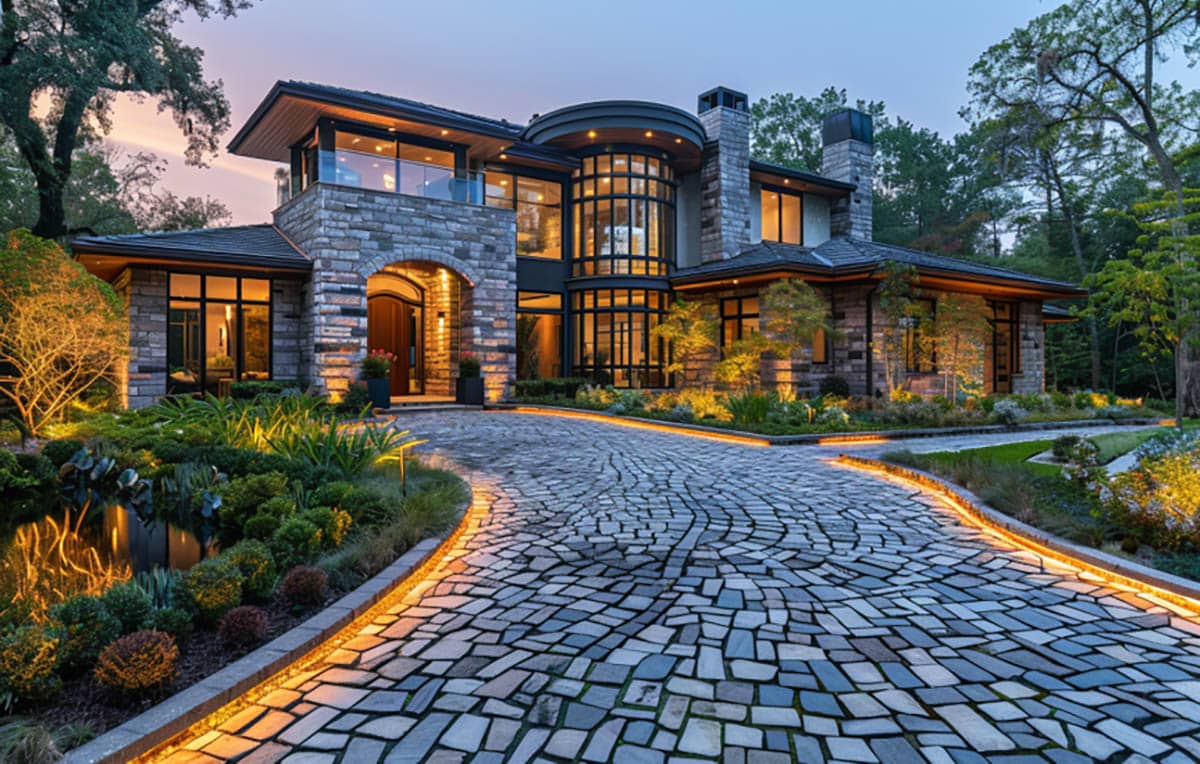
In this gallery of modern driveways, you’ll find a variety of materials, designs, and ideas for inspiration. A custom driveway design can enhance your home’s beauty and curb appeal. These pictures feature a variety of driveway styles and materials to showcase some of the types of surfaces popular today. Currently, asphalt, concrete, gravel, brick pavers, slate, and cobblestone are some of the most popular types of driveway materials in use for luxury homes. Each type of material has pros and cons, which will be discussed below.
Modern Driveway Materials And Design Tips
Selecting a driveway material today is about far more than simply finding a surface to park on—modern options let you tailor appearance, durability, environmental impact, and maintenance requirements to fit your climate and your design goals. Below is an expanded look at popular materials, each explained from a designer’s perspective, so you can weigh their strengths and limitations.
Cobblestone – Cobblestone driveways instantly evoke old‑world charm and come in a surprising range of colors—from warm beige and taupe to dramatic charcoal and even muted greens. Because the individual stones are hand‑set, labor costs are high and the surface is intentionally irregular, making snow removal tricky in cold climates. Designers often specify cobblestone as an accent band or apron (near the street or garage door) rather than paving the entire drive, pairing it with a smoother material—such as concrete pavers—for cost control and easier maintenance. A high‑quality polymeric sand between joints reduces weed growth and keeps stones from rocking.
Concrete – Concrete remains the workhorse of modern driveways; its higher installation cost over asphalt is offset by a 30‑ to 40‑year lifespan when properly maintained. Unlike decades past, plain gray slabs are no longer the norm. Color can be integrally mixed into the pour, acid‑stained afterward for layered patina, or dusted with powdered pigments for subtle variegation. Surface treatments range from broom‑finished for slip resistance to stamped patterns that mimic stone or wood. In freeze–thaw zones, request an air‑entrained mix and seal every two to three years to resist de‑icing salts. If you crave extra curb appeal, designers frequently score large concrete panels into geometric grids and infill joints with turf or polished river rock for a sleek, modern take on the classic motor court.
Permeable Pavers – Permeable interlocking concrete pavers (PICP) sit atop a gravel sub‑base that allows rainwater to filter into the soil rather than running into storm drains—ideal for municipalities with strict runoff codes. The pavers come in modular rectangles and squares that can be mixed to create herringbone, basket‑weave, or stacked‑bond patterns. Though the upfront cost is higher than standard pavers, homeowners often recoup it through reduced drainage requirements or storm‑water fees. Annual vacuum‑sweeping (rather than power‑washing) prevents the joint aggregate from washing away.
Exposed‑Aggregate Concrete – This material hides everyday tire marks and oil drips better than smooth concrete. Pea gravel or crushed quartz is seeded into the surface, then the top layer of cement paste is washed off to reveal a textured, slip‑resistant finish. Exposed aggregate pairs well with minimalist or mid‑century façades and is less prone to visible cracking because hairline flaws are camouflaged by the stone mix.
Asphalt – Traditional hot‑mix asphalt remains the most budget‑friendly solid surface, but its deep‑black color can fade to gray and soften during extreme heat. Polymer‑modified “superpave” mixes and chip‑seal overlays extend longevity and introduce color flecks that disguise aging. For an eco‑minded twist, porous asphalt incorporates larger aggregate to create voids for water infiltration—similar in concept to permeable pavers but with a seamless black appearance.
Tar and Chip – Tar and chip driveway are primarily constructed with asphalt in liquid form and stone. They can be inexpensive to install and provide a lot of traction for cars. The downside to tar and chip is that it can require maintenance if you live in an area with snow removal requirements. Otherwise, they may need to have another layer added after about 7 to 10 years of use. Another form similar to this is a crushed shell driveway, which uses little pieces of clam, scallop, and oysters to create a more eco-friendly choice.
Resin‑Bound Gravel – With resin‑bound systems, washed aggregate is coated in a clear, UV‑stable resin and troweled to a ¾‑inch‑thick layer over a concrete or asphalt base. The result is a smooth, stone‑carpet look that remains permeable, so puddles vanish quickly. Resin‑bound gravel comes in neutral stone colors, glass‑chip blends for sparkle, or even glow‑in‑the‑dark additives along driveway edges for subtle night lighting. Pricing is comparable to stamped concrete, and periodic power‑washing keeps the surface looking fresh.
Porcelain Pavers – Porcelain tiles aren’t just for kitchens or bathrooms, these outdoor‑rated ¾‑inch porcelain pavers now span driveway loads when installed with pedestal supports over reinforced concrete. They’re stain‑proof, fade‑proof, and available in luxury looks like vein‑cut marble or warm woodgrain. Expect to pay near the top of the material spectrum, but maintenance is virtually zero beyond occasional sweeping.
Reinforced Grass or Gravel Grids – For homeowners prioritizing green space, plastic or concrete grid systems offer a hybrid solution: cells filled with topsoil and turf seed or decorative gravel create a drivable surface that visually blends into the landscape. These grids excel on secondary parking pads, curved spur drives, or overflow guest spaces. Keep in mind that healthy turf requires irrigation and periodic fertilizing, so factor ongoing lawn care into your decision.
Designer Recommendations
Match material to architecture: Cobblestone or exposed aggregate complements traditional and rustic homes, while large‑format concrete slabs or resin‑bound gravel suit modern minimalist façades.
Plan for climate: Freeze–thaw cycles demand materials with built‑in drainage or flexible joints (asphalt, permeable pavers). Intense UV exposure favors color‑fast surfaces like porcelain or stained concrete.
Blend textures for interest: Use contrasting borders—such as a charcoal paver frame around a lighter concrete field—to break up expanses and tie driveway colors to roofing, shutters, or stone veneer.
Think long‑term maintenance: Smooth surfaces simplify snow removal; permeable options may need annual vacuuming; resin systems resist oil stains but cannot be spot‑patched easily.
Factor lighting and edges: Low‑profile LED bollards or recessed strip lights along drive edges enhance safety and elevate nighttime curb appeal, regardless of material.
Circular Driveways
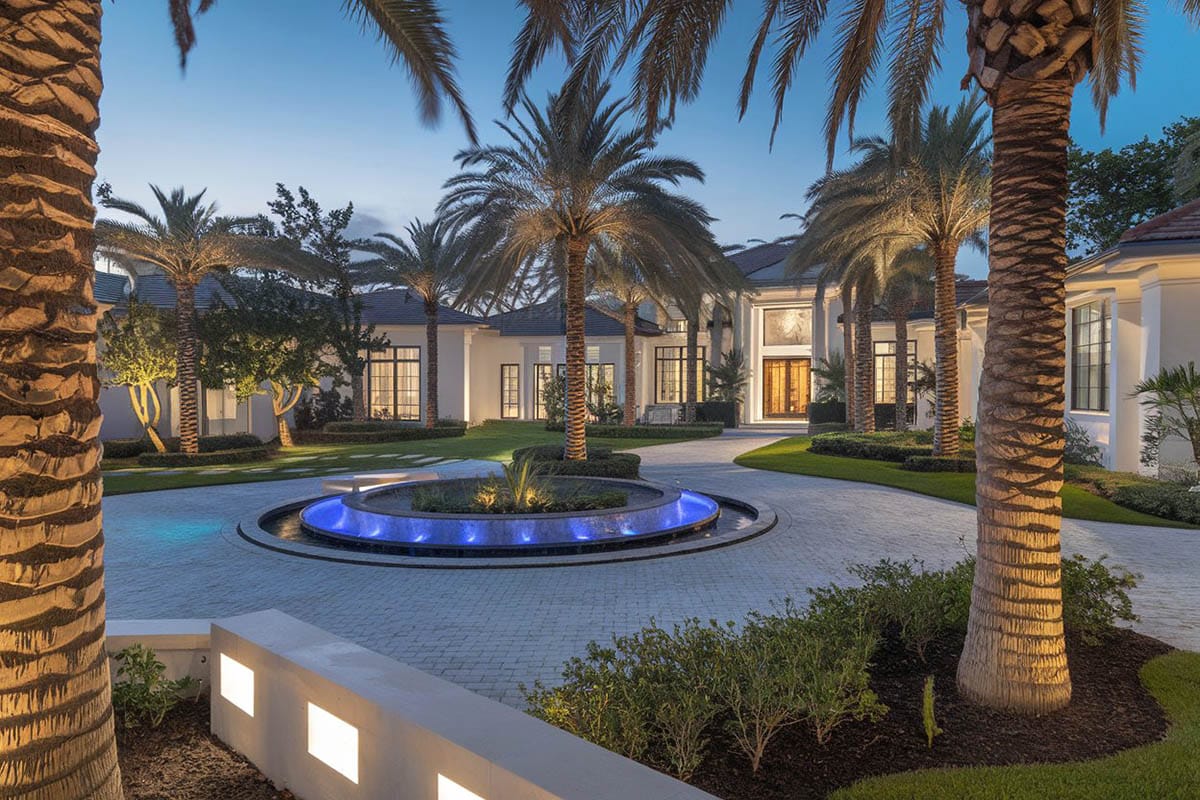
This gorgeous luxury home features an amazing circular driveway with pavers that are covered by a sealer to give it a high glossy sheen. The drive wraps around a stunning water feature with multiple fountains and is surrounded by a lush tropical garden with a walkway leading to the home’s front entrance.
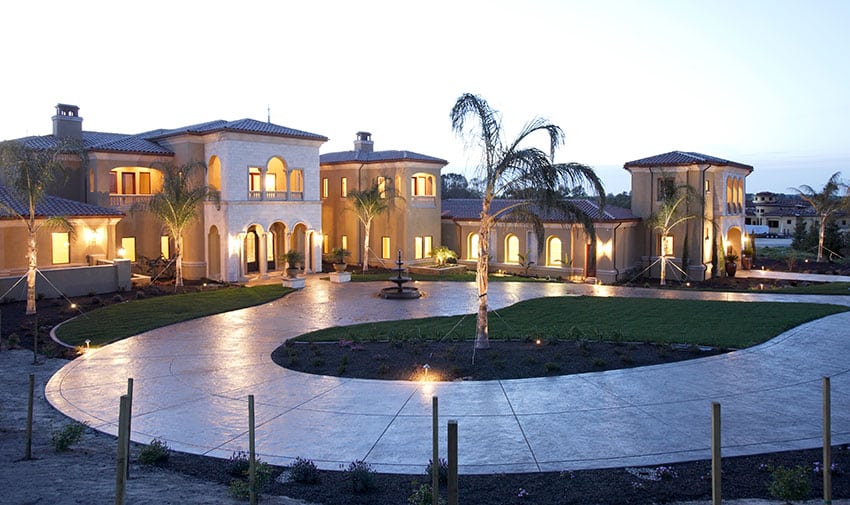
This luxury home features a beautiful stamped concrete circular driveway that winds around a large central fountain. The landscaping surrounding the circular driveway consists of grass, flowering plants, and tropical palms.
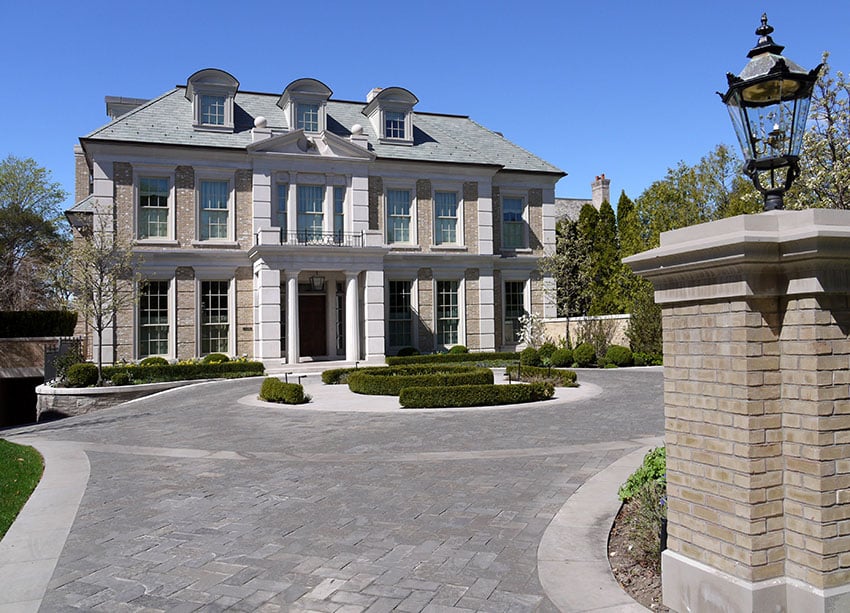
The prestigious estate home has a circular driveway with gray pavers and concrete that wraps around a central island with small hedges. The driveway also slants off to an underground garage to the side.
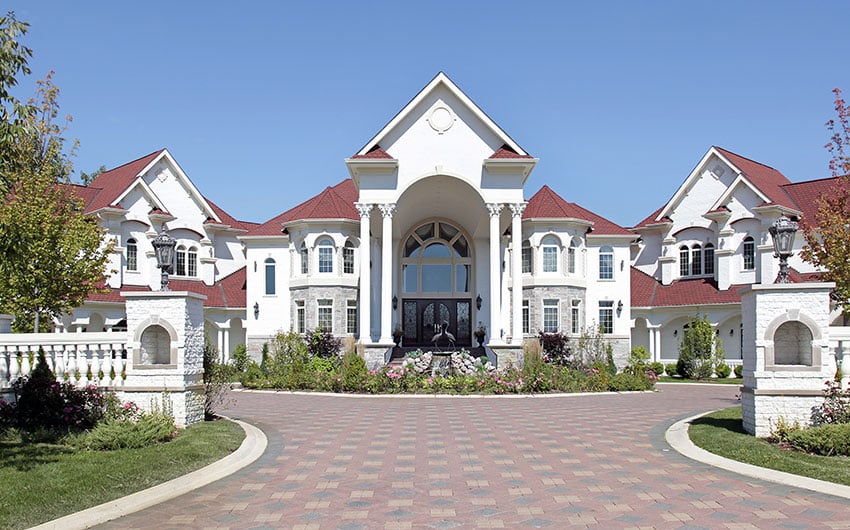
Custom design circular driveway using different color brick pavers with concrete side forms.
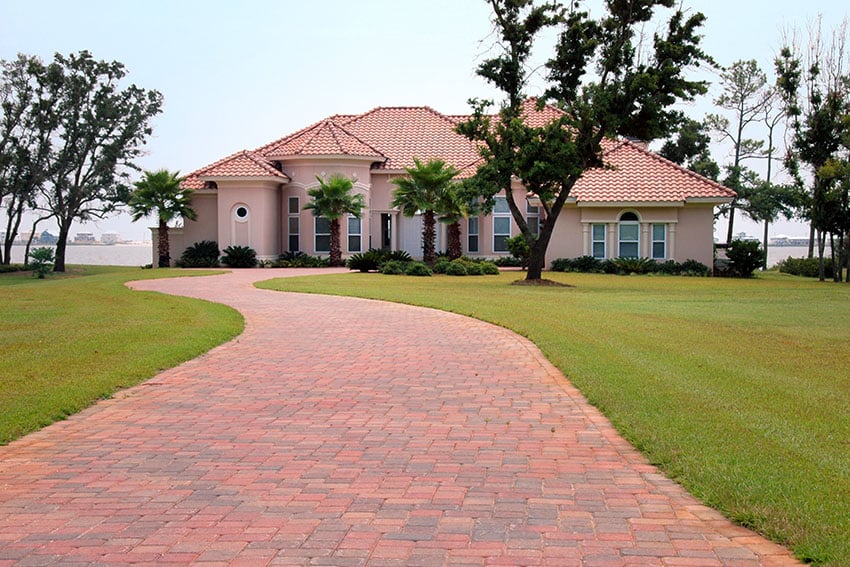
Winding brick driveway leading to a waterfront home.
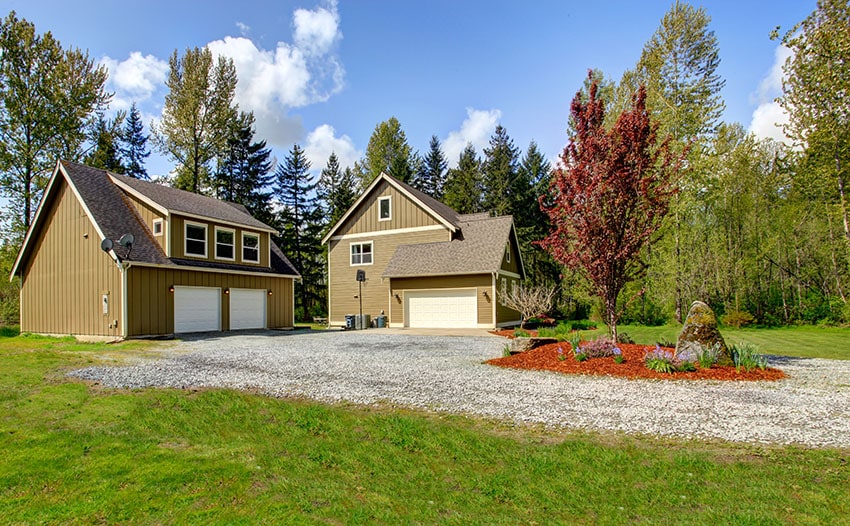
Loose gravel driveway at country home. Before you spread gravel to create a driveway like this,, prepare the ground. You’ll want to make sure you have a hard surface without any topsoil. In addition, make sure your surface has adequate drainage and side forms to keep the gravel from spreading outward.
Visit this page to see more types of driveways for the home.

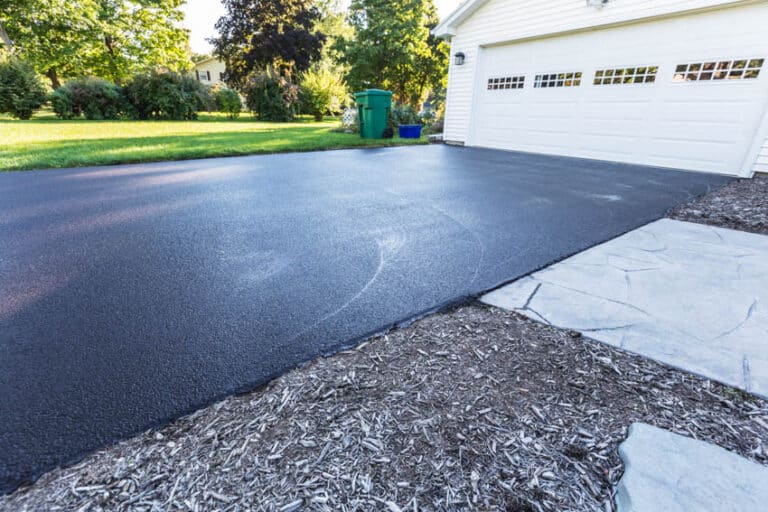
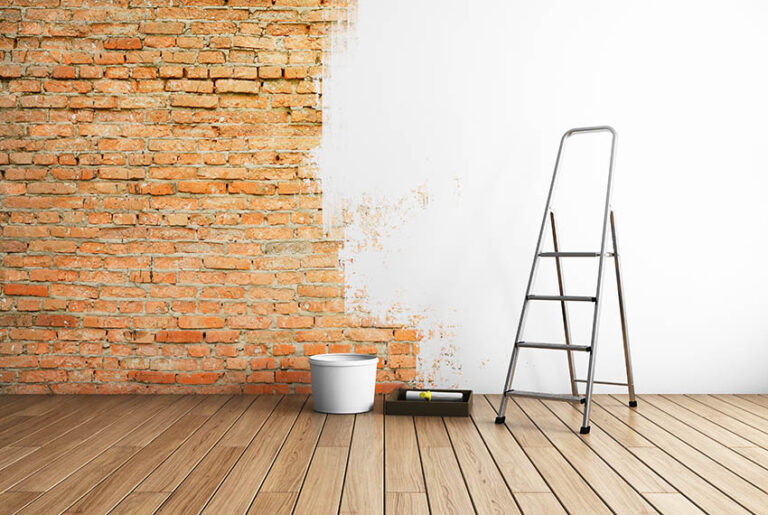

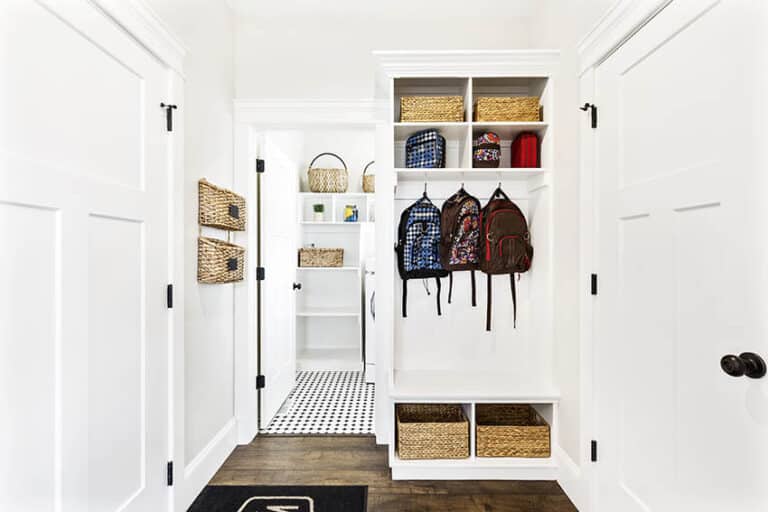

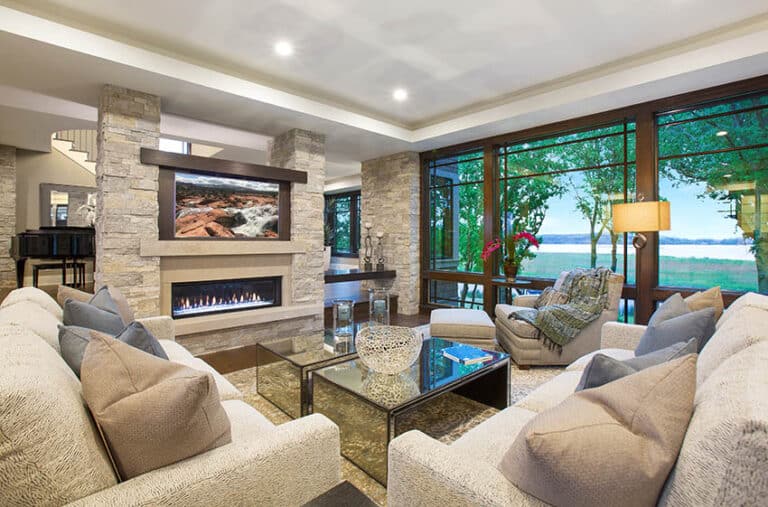
The examples you gave of concrete driveways that can be great for modern homes were definitely interesting to read about. The aesthetic that they can provide for the outdoor areas of a house is really something I like since we’ve been going for a minimalist idea with our house recently. If I can find a paving contractor in the area, I’ll definitely have them help me get something like this.